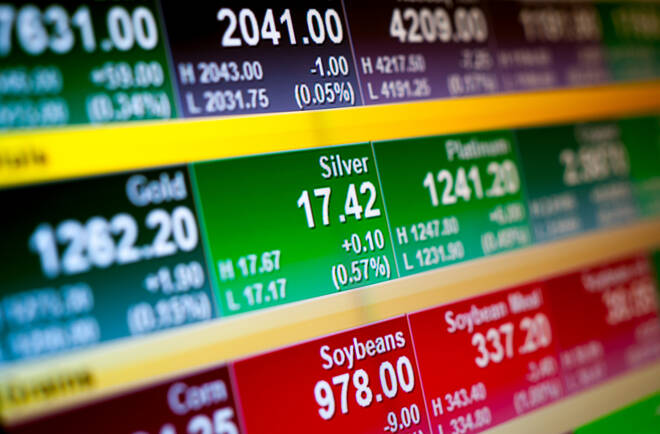Advertisement
Advertisement
European Equities: A Busy Economic Calendar and FED Chair Powell Testimony in Focus
By:
It's a busy day ahead, with inflation and German unemployment in focus. From the U.S consumer confidence and FED Chair Powell testimony will also influence.
French CPI m/m (Nov) Prelim
French HICP m/m (Nov) Prelim
German Unemployment Change (Nov)
German Unemployment Rate (Nov)
Italian CPI (MoM) (Nov) Prelim
Eurozone CPI (YoY) (Nov) Prelim
Wednesday, 1st December
German Retail Sales (MoM) (Oct)
Spanish Manufacturing PMI (Nov)
Italian Manufacturing PMI (Nov)
French Manufacturing PMI (Nov) Final
German Manufacturing PMI (Nov) Final
Eurozone Manufacturing PMI (Nov) Final
Thursday, 2nd December
Eurozone Unemployment Rate (Oct)
Friday, 3rd December
Spanish Services PMI (Nov)
Italian Services PMI (Nov)
French Services PMI (Nov) Final
German Services PMI (Nov) Final
Eurozone Markit Composite PMI (Nov) Final
Eurozone Services PMI (Nov) Final
Eurozone Retail Sales (MoM) (Oct)
The Majors
It was a relatively bullish start to the week for the European majors on Monday.
The EuroStoxx600 and CAC40 rose by 0.78% and by 0.54% respectively, with the DAX30 ending the day up by 0.16%.
Economic data took a back seat on the day, with the markets in calm mode after Friday’s flight to safety. The upside was relatively modest, however, with COVID-19 uncertainty pegging the majors back.
The Stats
Member State Inflation
Spain’s annual rate of inflation picked up from a revised 5.4% to 5.5% versus a forecasted 4.0%. The HICP increased by 5.6% in November, year-on-year. In October, the HICP had been up by 5.4%.
According to Ine.es,
- Prices for COVID-19 services were up 13.4% year-on-year, with prices for COVID-19 goods up 2.5%.
- Year-on-year pries for food and non-alcoholic beverages were up 3.2%, with prices for unprocessed food up 3.7%.
- Processed food prices were up by 2.5% year-on-year in November.
- Month-on-month, consumer prices rose by 0.4%.
Germany’s annual rate of inflation accelerated from 4.5% to 5.2% in November versus a forecasted 5.0%. Month-on-month, however, consumer prices slipped by 0.2%, partially reversing a 0.5% rise from October. Economists had forecast a 0.4% decline.
According to Destatis,
- Prices for goods were up 5.2%, driven by a 22.1% rise in energy prices year-on-year.
- Food prices rose by a relatively modest 4.5%.
- Prices for services rose by 2.8% year-on-year, with prices for rents up 1.4%.
Eurozone Economic Sentiment and Consumer Confidence
In November, the Economic Sentiment Indicator fell from 118.6 to 117.5, with the consumer confidence index down from -4.8 to -6.8, which were in line with forecasts.
According to the EU Commission,
The Employment Expectations Indicator increased by 1.7 points to 115.6, the highest level since Jan-2018.
From the U.S
Economic data was limited to housing sector data that had a muted impact on the majors.
The Market Movers
For the DAX: It was a mixed day for the auto sector on Monday. BMW and Volkswagen found support, rising by 0.13% and by 0.99% respectively. Continental slid by 4.27% to lead the way down, however, with Daimler ending the day down by 0.07%.
It was a bearish day for the banks. Deutsche Bank and Commerzbank saw losses of 0.47% and 1.03% respectively.
From the CAC, it was a bullish day for the banks. Soc Gen rose by 0.81, with Credit Agricole and BNP Paribas seeing gains of 0.55% and 0.16% respectively.
The French auto sector had a mixed session. Stellantis NV rose by 0.02%, while Renault ended the day down by 1.57%.
Air France-KLM and Airbus SE ended the day up by 0.50% and by 0.33% respectively.
On the VIX Index
It was back into the red for the VIX on Monday, as the U.S equity markets looked to recoup Friday’s sell-off.
Partially reversing a 54.04% surge from Friday, the VIX slid by 19.78% to end the day at 22.96.
The Dow rose by 0.68%, with the NASDAQ and the S&P500 seeing gains of 1.88% and 1.32% respectively.
The Day Ahead
It’s a busy day ahead on the Eurozone’s economic calendar. Prelim November inflation figures for France, Italy, and the Eurozone are due out along with French consumer spending and 3rd quarter GDP numbers. From Germany, unemployment figures for November will also draw interest.
From the U.S, consumer confidence will also be in focus later in the day, along with FED Chair Powell testimony.
Ahead of the European open, China’s NBS private sector PMI numbers for November will set the tone going into the European open.
Away from the economic calendar, however, COVID-19 news will need continued monitoring.
The Futures
In the futures markets, at the time of writing, the Dow Mini was up by 78 points.
About the Author
Bob Masonauthor
With over 28 years of experience in the financial industry, Bob has worked with various global rating agencies and multinational banks. Currently he is covering currencies, commodities, alternative asset classes and global equities, focusing mostly on European and Asian markets.
Advertisement
